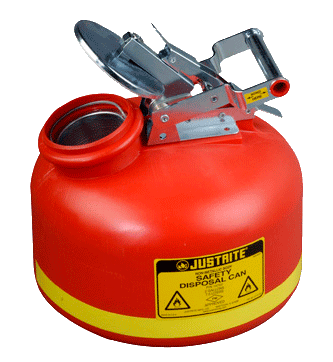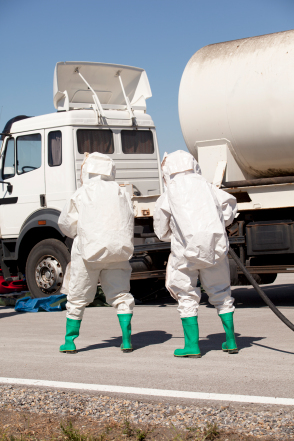How Fluid Waste Disposal Functions: A Thorough Summary of Methods and Technologies Utilized

Review of Fluid Waste Kind
The intricacy of liquid waste kinds demands a detailed understanding of their features and implications for disposal. Liquid waste can extensively be categorized right into a number of kinds, including commercial, local, agricultural, and harmful waste. Each group shows distinct residential or commercial properties, requiring particular management strategies to minimize ecological and wellness dangers.
Industrial liquid waste originates from producing processes and usually consists of a series of pollutants, such as heavy steels, solvents, and organic substances. Metropolitan fluid waste, largely comprising wastewater from families and industrial establishments, includes organic matter, nutrients, and pathogens (industrial wastewater treatment). Agricultural liquid waste, consisting of drainage from farms, may contain plant foods, chemicals, and pet waste, positioning threats to water quality and ecosystems
Harmful fluid waste is characterized by its poisoning, sensitivity, or possible to cause injury. Recognizing these diverse fluid waste types is essential for creating effective disposal approaches and guaranteeing compliance with ecological guidelines.
Physical Treatment Methods

Screening is the preliminary action, where larger bits and debris are gotten rid of from the fluid waste utilizing screens or grates. This procedure protects downstream tools from damages and makes certain smoother procedure. Following screening, sedimentation utilizes gravitational pressure to different solids from fluids. In sedimentation storage tanks, larger fragments resolve at the base, forming a sludge layer, while the cleared up liquid can be additional dealt with.
Purification is one more important method that entails passing the liquid with porous products, such as sand or membrane layers, to catch smaller sized bits. This action improves the top quality of the fluid, making it appropriate for subsequent treatment procedures.

Chemical Therapy Strategies
Chemical treatment techniques are vital for successfully taking care of liquid waste, specifically in addressing liquified and colloidal pollutants that physical approaches may not adequately eliminate. These methods utilize various chemical agents to counteract, precipitate, or transform hazardous materials into less damaging forms.
One usual method is coagulation and flocculation, where chemicals such as alum or ferric chloride are included in advertise the aggregation of put on hold fragments. This process improves sedimentation, permitting much easier elimination of the resulting sludge. Additionally, oxidation procedures, employing representatives like chlorine or ozone, are utilized to break down intricate organic substances and microorganisms, rendering the waste safer for discharge or additional therapy.
Neutralization is another critical technique, which readjusts the pH of acidic or alkaline waste streams to neutral degrees, avoiding prospective injury to downstream systems and the setting. Moreover, advanced oxidation processes (AOPs) utilize mixes of oxidants and ultraviolet light to break down relentless toxins, accomplishing a greater level of treatment efficiency.
Organic Treatment Procedures
Organic treatment processes play an important function in the administration of fluid waste by making use of microorganisms to decompose raw material and reduce pollutant degrees. These processes can be broadly categorized right into anaerobic and cardiovascular treatments, each utilizing certain microbial areas to accomplish effective waste degradation.
Cardio therapy includes the use of oxygen to help with the failure of organic materials by bacteria. This procedure is typically implemented in turned on sludge click this site systems, where oygenation tanks give a favorable atmosphere for microbial growth, resulting in the oxidation of organic pollutants. The resultant biomass can be divided from treated effluent with sedimentation.
In contrast, anaerobic treatment happens in the absence of oxygen, relying upon different germs to break down raw material. This approach is particularly useful for high-strength waste, as it generates biogas, a renewable resource resource, while minimizing sludge manufacturing. Technologies such as anaerobic digesters are regularly employed in municipal and industrial applications.
Both anaerobic and aerobic organic treatments not only decrease the environmental influence of fluid waste but likewise promote resource recovery, making them essential elements of sustainable waste monitoring techniques. Their effectiveness, efficiency, and adaptability sustain their widespread execution across numerous sectors.
Emerging Technologies in Disposal
Cutting-edge methods to fluid waste disposal are swiftly progressing, driven by innovations in innovation and a raising emphasis on sustainability. Among these arising modern technologies, membrane layer bioreactors (MBRs) have actually acquired traction for their capacity to integrate organic therapy useful content with membrane layer filtration, resulting in premium effluent that can be recycled in numerous applications. MBRs enable smaller sized footprints and more efficient procedures contrasted to traditional systems.
One more encouraging development is the usage of anaerobic digestion integrated with nutrient recuperation innovations, which not only deals with liquid waste but also generates biogas and recovers valuable nutrients like nitrogen and phosphorus. This double advantage boosts resource effectiveness and decreases ecological influence.
Furthermore, progressed oxidation processes (AOPs) are being taken on for the degradation of intricate natural pollutants. These techniques make use of effective oxidants and catalysts to break down contaminants at the molecular degree, offering a very efficient option for challenging waste streams.
Moreover, the assimilation of man-made knowledge and machine understanding in waste monitoring systems is enhancing functional performance and predictive upkeep, bring about lowered expenses and improved environmental conformity. These technologies mirror a significant change in the direction of more efficient and lasting fluid waste disposal methods.
Conclusion
In verdict, effective fluid waste disposal requires a thorough understanding of various strategies and innovations. By constantly progressing these approaches, it comes to be possible to attend to the expanding challenges linked with liquid waste, eventually adding to environmental defense and source healing.
Fluid waste disposal is an important facet of environmental monitoring, requiring an extensive understanding of various strategies and innovations tailored to various waste kinds. Fluid waste can broadly be categorized right into a number of kinds, including commercial, community, agricultural, and dangerous waste. Agricultural fluid waste, including runoff from farms, may consist of fertilizers, pesticides, and pet waste, presenting threats to water high quality and ecological communities.
Numerous physical treatment methods play a vital function in managing liquid waste successfully - industrial wastewater treatment.In final thought, effective fluid waste disposal requires a thorough understanding of numerous read this methods and modern technologies